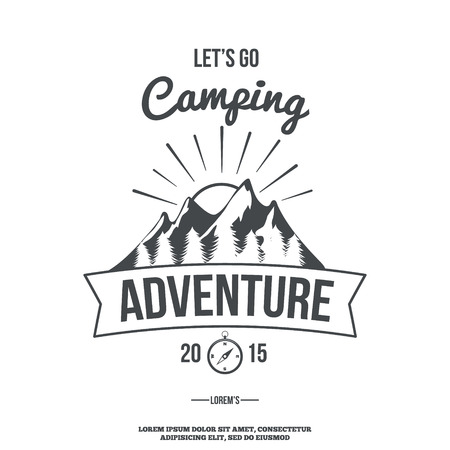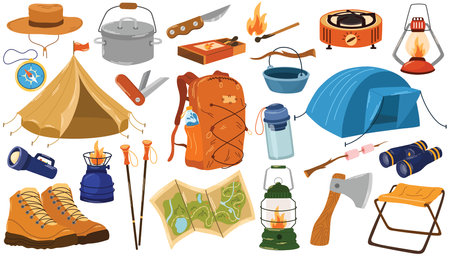Understanding Tent Capacity Ratings
When youre shopping for a tent, youll often see them labeled as “2-person,” “4-person,” “6-person,” and so on. But what do these ratings actually mean? And more importantly, will a 4-person tent really fit four people comfortably on your next camping trip?
The truth is, tent capacity ratings are based on how many average-sized sleeping bags can fit side by side inside the tent—with little to no extra space. These ratings dont take into account gear, personal space, or comfort preferences.
How Tent Manufacturers Determine Capacity
Most tent brands base their capacity numbers on a snug fit. Think of it like packing sardines in a can—everyone fits, but theres no room to move around. This standard assumes each person needs about 20 inches of sleeping width and doesnt consider any other gear you might bring inside the tent.
Typical Tent Size Chart
| Rated Capacity | Fits (Tightly) | Recommended For Comfort |
|---|---|---|
| 2-Person Tent | 2 adults with no gear | 1 adult + gear or 1 adult + child |
| 4-Person Tent | 4 adults shoulder to shoulder | 2-3 people + some gear |
| 6-Person Tent | 6 adults packed tightly | 3-4 people + gear and room to move |
| 8-Person Tent | 8 adults in sleeping bags only | 5-6 people + gear and living space |
Why You Might Want to Size Up
If comfort is important—and let’s be real, who wants to feel cramped all weekend?—consider sizing up by at least one or two capacities. For example, if you have four people, a 6-person tent will offer more breathing room and storage space for backpacks, boots, and other essentials.
Think About Your Groups Needs
A family camping with kids will have different needs than a group of backpackers. If youre car camping and not worried about weight, going bigger usually means a much better experience. On the flip side, backpackers may prefer lighter tents even if it means things get a bit cozy at night.
Quick Tip:
If youre bringing air mattresses or cots, double-check the floor dimensions of the tent—not just the rated capacity—to make sure everything fits.
2. Factoring in Gear and Space Needs
When choosing a tent for your group, it’s easy to focus only on how many people it can sleep. But if youve ever gone camping before, you know that theres a lot more to consider than just fitting bodies inside. Think about your gear, pets, and how you actually live inside the tent. Do you like extra room to stretch out? Are you bringing coolers, backpacks, or even your dog? All of these things affect what size tent youll need.
Plan for More Than Just Sleeping Space
Tent capacities are usually based on how many sleeping bags can fit side by side—like sardines. A “4-person tent” means four people lying shoulder-to-shoulder with zero room for anything else. If youre bringing along gear, or if anyone in your group likes personal space (and who doesnt?), you’ll want to size up.
What Will You Be Storing Inside?
Your lifestyle and camping style matter. Some people leave their gear outside under a tarp or in the car, but others prefer having it all within arms reach. Heres a quick guide to help estimate how much extra space you might need:
| Item/Need | Recommended Extra Space |
|---|---|
| Backpacks & Duffels | Add space for 1 person per 2 bags |
| Camping Chairs & Tables | Add space for 1 person |
| Coolers & Food Storage | Add space for 1 person |
| Dogs or Pets | Add space for 1 person per pet |
| Extra Comfort (stretching out, changing clothes) | Add space for 1–2 people |
Group Size vs Tent Size: A Realistic Match-Up
If youre going with a group of four and want to store gear and have room to move around comfortably, go for a 6-person tent instead of squeezing into a 4-person one. Here’s a simple rule of thumb:
| # of Campers | Recommended Tent Size |
|---|---|
| 2 People + Gear/Dog | 4-Person Tent |
| 3–4 People + Gear | 6-Person Tent |
| 5–6 People + Gear/Pets | 8-Person Tent or Larger |
Your Lifestyle Matters Too
If youre into glamping or just like to chill inside the tent during the day, consider tents with added height so you can stand up and walk around. Cabin-style tents offer more vertical space, while dome tents are better for windy areas but feel tighter inside.
A Few Quick Tips:
- If camping with kids, leave room for toys and play area.
- If car camping, bigger is usually better—you’re not carrying it far.
- If backpacking, balance weight with comfort—you may still want to size up slightly.
The bottom line? Don’t just count heads. Think about everything (and everyone) going inside your tent so that your trip is comfortable and stress-free.

3. Group Dynamics and Sleeping Arrangements
When choosing the right tent size, its not just about how many people youre bringing—its also about how everyone gets along and how much space each person needs to feel comfortable. Some groups are totally fine with tight quarters, while others need a little more elbow room.
Consider Who’s in Your Group
Think about the makeup of your group. Are you camping with close friends, family members, kids, or maybe coworkers? The closer the relationship, the easier it might be to share tighter sleeping arrangements. But if youre mixing adults who aren’t used to sharing space, you’ll want a bigger tent to avoid awkward situations and get better sleep.
Example: Family vs. Friends
| Group Type | Tent Size Recommendation | Why It Works |
|---|---|---|
| Family of 4 (2 adults + 2 kids) | 6-person tent | Extra room for gear and easy movement inside |
| Group of 4 friends | 6 to 8-person tent | More personal space and privacy for each camper |
Personal Space Preferences Matter
Not everyone likes to be packed in like sardines. If someone in your group is a light sleeper, snores loudly, or just likes their own space, it’s smart to size up. A good rule of thumb is to subtract one or two from the manufacturer’s capacity rating when you want extra comfort.
Sizing Tip:
| Labeled Tent Size | Best For (Real Comfort) |
|---|---|
| 4-person tent | 2-3 people + gear |
| 6-person tent | 4 people + gear or pets |
| 8-person tent | 5-6 people with some room to spare |
Plan Your Sleeping Layout Ahead of Time
If you’re using sleeping pads, air mattresses, or even cots, factor those into your layout plan. Air mattresses take up more space than basic pads, so you may need a larger tent even for a small group.
Layout Example:
- Twin air mattress: About 39″ x 75″
- Queen air mattress: About 60″ x 80″
- Cot with gear storage: Needs extra floor space plus headroom clearance
The bottom line: understanding your group’s dynamics and how they prefer to sleep can help you avoid cramped nights and cranky mornings. Take time to think through these details before picking your tent size—youll thank yourself later.
4. Tent Layouts and Livability
When youre shopping for a tent for your group, its not just about how many people it can fit—its also about how comfortable everyone will be once youre inside. Different tent shapes and layouts can make a big difference in headroom, privacy, and overall livability during your trip.
Cabin Tents vs. Dome Tents
The two most common tent styles youll come across are cabin tents and dome tents. Each has its own pros and cons depending on your groups needs.
| Feature | Cabin Tent | Dome Tent |
|---|---|---|
| Headroom | Taller ceilings, more vertical walls — great for standing up and moving around | Lower peak height, sloped walls — better for sitting or sleeping but less room to stand |
| Space Layout | Feels more like a room; often includes dividers for multiple rooms | Centrally focused space; limited room separation |
| Best For | Larger groups, families, longer stays, campers who value comfort and space | Simpler setups, smaller groups, shorter trips, or backpacking |
Privacy and Room Dividers
If youre camping with friends or family, having some personal space can go a long way. Many cabin-style tents come with built-in room dividers or even separate “rooms,” which is perfect if you want to split up kids and adults or just need a changing area. Dome tents rarely offer this feature due to their shape and size limitations.
Lifestyle Considerations
Your groups lifestyle also plays into the best layout choice. For example:
- Larger families: Look for cabin tents with multiple rooms and doors to avoid traffic jams inside.
- Couples or small friend groups: A dome tent might be plenty roomy while still being easy to pack and set up.
- Tall campers: Cabin tents allow you to stand upright without crouching all the time—your back will thank you!
Packed Size vs. Living Space
Bigger tents usually mean more livable space but also take up more room in your car and can be heavier to carry. Make sure to balance comfort with practicality depending on how far youre hiking from the parking lot—or if youre car camping right next to your site.
Tent Tip:
A good rule of thumb: Always size up by at least one person when choosing a tent. A “4-person” tent may technically fit four sleeping bags shoulder-to-shoulder—but adding extra space makes things much more enjoyable, especially with gear involved.
Selecting the right layout isnt just about sleep—its about how youll live in the space day-to-day during your trip. Think about rainy days spent inside, getting dressed, or just hanging out before bedtime. Choosing the right layout means a more comfortable and enjoyable outdoor experience for everyone in your group.
5. Weather Considerations and Seasonal Use
When choosing the right tent size for your group, it’s not just about how many people can fit inside—it’s also about how well the tent performs in different weather conditions. The size of your tent can impact insulation, ventilation, and stability, all of which are crucial depending on when and where you’re camping.
Insulation: Keeping Warm in Cold Weather
Larger tents usually have more open space, which means they can be harder to keep warm during chilly nights. If youre planning to camp in colder seasons or higher elevations, a smaller tent might be better for heat retention since there’s less air volume to warm up. Also, consider how many people will share body heat inside the tent—more campers can help keep things warmer.
Tip:
If you need a large tent for your group but still want warmth, look for tents with solid fabric walls (less mesh), zippered windows that seal tight, and the ability to add an insulated liner or rainfly.
Ventilation: Staying Cool in Warm Weather
Tents with more interior space can trap heat if they don’t have good airflow. In hot or humid climates, proper ventilation is key to keeping everyone comfortable. Look for larger tents with multiple mesh windows, ceiling vents, and doors on opposite sides to allow cross-breeze.
Quick Comparison: Tent Size vs. Ventilation Needs
| Tent Size | Hot Weather Use | Recommended Features |
|---|---|---|
| 2-4 Person | Good airflow with minimal setup | Mesh panels, single door venting |
| 6-8 Person | Needs strategic vent placement | Multiple windows and roof vents |
| 10+ Person | Can get stuffy without cross-breeze | Dual doors, high-low vent system |
Stability: Handling Wind and Rain
Larger tents have bigger surface areas, which can make them more vulnerable in windy conditions. Smaller tents tend to be more aerodynamic and stable in storms. If you’re camping in areas prone to strong winds or heavy rain (like coastal areas or mountains), you’ll want a tent that balances size with structural integrity.
Look For:
- Strong aluminum or reinforced fiberglass poles
- Full-coverage rainfly for wet weather protection
- Guy lines and stake-down points for extra anchoring
Pro Tip:
If your group needs a larger tent but youre expecting rough weather, consider splitting into two smaller tents. This offers better stability and flexibility while still accommodating everyone comfortably.
Choosing the right tent size isn’t just about comfort—it directly affects how well you handle changing weather throughout your trip. Think about the season and environment you’ll be camping in to find the best fit for your group’s needs.


